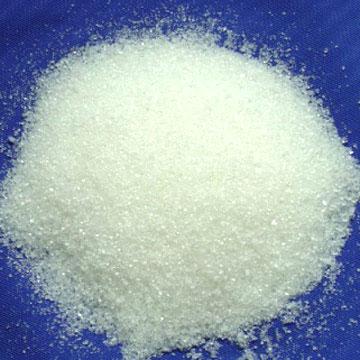|
PHOTOCHEM L-Tartaric Acid (87-69-4) per 1kg (05577-1000PP)
What is tartaric acid and what is known about this product? A toxicology manual (3) indicates that tartaric acid is a highly toxic substance. As little as 12 g has caused human fatality with death occurring from 12 hours to 9 days after ingestion. Gastrointestinal symptoms were marked (violent vomiting and diarrhea, abdominal pain, thirst) and followed by cardiovascular collapse and/or acute renal failure(3). A gram is approximately the weight of a cigarette. This compound especially damages the muscles and the kidney (4,5) and may even cause fatal human nephropathy (kidney damage) (6) which was of interest to me since the two brothers with autism initially evaluated had the extreme muscle weakness as well as evidence of impaired renal function. Properties of tartaric acid What is tartaric acid and what is known about this product? A toxicology manual (3) indicates that tartaric acid is a highly toxic substance. As little as 12 g has caused human fatality with death occurring from 12 hours to 9 days after ingestion. Gastrointestinal symptoms were marked (violent vomiting and diarrhea, abdominal pain, thirst) and followed by cardiovascular collapse and/or acute renal failure(3). A gram is approximately the weight of a cigarette. This compound especially damages the muscles and the kidney (4,5) and may even cause fatal human nephropathy (kidney damage) (6) which was of interest to me since the two brothers with autism initially evaluated had the extreme muscle weakness as well as evidence of impaired renal function. Interestingly, I have found that tartaric acid is also elevated in urine samples of adults with the disorder fibromyalgia, a debilitating disease associated with muscle and joint pain, depression, foggy thinking, and chronic fatigue. (Dr. Kevorkian has assisted in the suicide of two people with this disorder, which is tragic since a simple antiyeast treatment (7,8) may help relieve the symptoms of this disorder.) Values for tartaric acid in urine may be extremely elevated in autism. A young Korean child with autism had a value of 6000 mmol/mol creatinine, a value that is about 600 times the median normal value. (The child's value returned to normal after a few weeks of antifungal treatment.) Assuming that the yeast in the intestine of the child were producing tartaric acid at a constant rate, this child would be exposed to 4.5 grams per day of tartaric acid, over one-third of the reported lethal dose of tartaric acid! Proponents of the theory that wheat gluten sensitivity is the main biochemical abnormality in autism would have difficulty in explaining this case since rice was the only grain in this child's diet.(Gluten and casein restriction is a very important therapy in most cases of autism and is dealt with in the chapters by Lisa Lewis, Pamela Scott, and Karyn Seroussi, as well as in the chapter on the digestive system.) Figure 5
Tartaric acid has not yet been found by me in Candida culture media. It may actually be due to plain baker's yeast (Saccharomyces cerevisiae) rather than Candida. Tartaric acid may only be formed in the absence of oxygen. It is also available as a food additive in baking powder, grape and lime flavored beverages, and poultry. It may also be found in grapes and grape products. Cream of tartar which may be used for baking is nearly pure tartaric acid. Its purposes in the food industry include firming agent, flavor enhancer, flavoring agent, humectant, acidity control agent, and sequestant (9). There is no evidence that any mammals can produce it, so it is probably purely a yeast by-product. Tartaric acid is an analog of the Krebs cycle compound malic acid (Figure 5). An analog is a chemical compound that closely resembles but is not identical to another chemical compound. The atoms that differ in the two molecules are shaded in gray. The reason an analog is important is that the analog may prevent the normal biochemical from completing its normal biochemical function. An analogy I would use to explain the analogs is this. You live in a neighborhood in which many of the houses were built by the same builder who also used the same locksmith for all those houses. The locksmith was a good locksmith and he didn't put the same lock in everyone's house. He put a lock in each house that is just a little different. You have had a few burglaries in your neighborhood recently and you go to visit your neighbor next door. Ordinarily, you would just have left your key there, but because of the burglaries, you decide to lock your door before going to get a cup of coffee at your neighbor's house. You lock your door, go to your neighbor's house and your neighbor gives you a cup of coffee at the kitchen counter. Your key is in your hand and you put your key on the kitchen counter; your neighbor's key is right there beside yours. You drink the cup of coffee and you move around the counter to the opposite side. You chat for a while and then you decide to go home and you reach down for your key and unknowingly pick up your neighbor's key. Then you take your neighbor's key which looks almost exactly like yours and you go back to your house and stick it in the lock. It goes in and then you start to turn it and nothing happens. Then, if you are a man, you will keep on turning it until the key breaks off. If you are a woman, more than likely what you will do is see that it doesn't fit and go back to your neighbor's and get the right one. On a molecular level the same kind of thing happens. Probably in some of the cases the analog or false copy of the molecule breaks off and is stuck in the biological keyhole which may be the critical part of an enzyme or cell receptor. These analogs then prevent the biochemical functioning from occurring. In some cases the key eventually comes out and the right one is able to perform its biochemical function. However, your metabolism has experienced some degree of inconvenience and delay and lack of efficiency. This lack of efficiency can be very important if a high percentage of your metabolic processes are being affected simultaneously. Organs like the brain with a high rate of metabolism may be affected more than other organs. Think of how your TV set runs during a brownout when the supply of electricity is too low. If your metabolic processes are not efficient and are not producing sufficient energy, the brain may not process information efficiently. Let's return to tartaric acid and its specific role as an analog. Tartaric acid inhibits the enzyme fumarase (10) which is important in the function of the Krebs cycle, the biochemical process that produces most of the body's energy. In addition, the inhibition of fumarase also decreases the supply of malic acid for other functions of the cell. The proper function of the Krebs cycle depends on a continuing supply of malic acid. If malic acid is not provided in sufficient quantities, the Krebs cycle is short-circuited.
Figure 6 A large percentage of patients with the disorder fibromyalgia who have high amounts of tartaric acid in the urine respond favorably to treatment with malic acid (11-13). I presume that supplements of malic acid are able to overcome the toxic effects of tartaric acid by supplying deficient malic acid. Fifty percent of patients with fibromyalgia who also frequently have elevated yeast metabolites also suffer from hypoglycemia (low blood sugar) even though their diet may have adequate or even excessive sugar(14). The reason may be due to the inhibition of the Krebs cycle by tartaric acid. The Krebs cycle is the main provider of raw materials such as malic acid that can be converted to blood sugar (Figure 6) when the body uses up its supply. (The technical name for this process is gluconeogenesis or "new formation of glucose".) If sufficient malic acid cannot be produced, the body cannot produce the sugar glucose which is the main fuel for the brain. The person with hypoglycemia feels weak and their thinking is foggy because there is insufficient fuel for their brain. If adults with elevated values of tartaric acid in the urine have foggy thinking, have little energy, and are so depressed that they may seek out Dr. Kevorkian, imagine what a young child who has some of the same toxins and who has yet to form a clear concept of the world must feel like. Citramalic acid, like tartaric acid, is another analog of the normal compound malic acid. Citramalic acid is exactly the same(Figure 5) as malic acid except it has an extra CH3 group called a methyl group on it. Presumably citramalic acid acts like tartaric acid in inhibiting the production of malic acid. There are two different type of citramalic acid called isomers. Both types of citramalic acid are probably in the urine of children with autism (2). Arabinose and Candida Figure 7 shows the chemical structure of a compound called arabinose which is a sugar. (Arabinose is not an organic acid but is a chemical that we detect with our test.) This is not the same kind of sugar that is on your kitchen table. But, like the sugar on your kitchen table, it is sweet. That is what makes it a sugar. It is chemically very closely related to table sugar even though it is not the same thing. I found that in the two brothers with autism some of the values were much higher than in normal children. Figure 7 Figure 8 shows the distribution of arabinose values in different groups. Each dot represents a different individual value for the urine concentration of this product. In children with autism the values can be extremely high. Although there is some degree of overlap between the children with autism and the control normal children of the same age range, the mean and median values of urine arabinose for children with autism are much higher than those of normal children. The mean arabinose concentration in the urine samples of males with autism was over five times that of the normal male controls and the median value six times that of the normal male controls. In infants (data not shown), arabinose values are extremely low, presumably because the intestinal tracts of newborn babies are nearly free of yeast. This particular yeast sugar called arabinose is a type of sugar called an aldose that it is not know to be produced by humans. The arabitol (the alternative name for it is arabinitol) is a closely related yeast carbohydrate that is produced by Candida. I suspect that humans may possess the ability to convert arabitol to arabinose. Bacteria in the intestine may also convert arabitol to arabinose. We find a compound that is identified as arabinose in very high levels in urine of autistic children. An autistic child with the highest level of urine arabinose(over 40 times the upper limit of normal) had chronic hypoglycemia almost continuously following antibiotic treatment for a throat infection as an infant(see chapter on gastrointestinal tract). Women with vulvovaginitis due to Candida were found to have elevated arabinose in the urine(20); restriction of dietary sugar brought about a dramatic reduction in the incidence and severity of the vulvovaginitis. Thus, one of the mechanisms of action of antifungal drug therapy for autism might be to reduce the concentration of an abnormal carbohydrate produced by the yeast that can not be tolerated by the child with defective pentose metabolism. Arabinose tolerance tests should be able to rapidly determine if such biochemical defects are present in children with autism. Elevated protein-bound arabinose has been found in the serum proteins of schizophrenics (21) and in children with conduct disorders(22) and alteration of protein function by arabinose might be another mechanism by which arabinose might effect biochemical processes in autism and other diseases.
Other sources of arabinose Arabinose may be found in some other foods in small quantities but the most significant source of dietary arabinose appears to be apples. Arabinose values may be very elevated after drinking apple juice or products such as applesauce(Figure 9).Therefore, apple products should be restricted for a couple of days prior to testing. Several parents have reported to me severe worsening of the symptoms of autism within a short time after their children ate apples. I suspect that the arabinose from apple products is responsible for this reaction. Figure 9
Arabinose may also be formed from the breakdown of the sugar glucose (23) and antioxidants such as glutathione may inhibit this conversion(24). The breakdown of glucose also results in the formation of an aldehyde called glyoxal which can also react with and modify protein structure and function. Glyoxal may be converted in the body to glycolic acid, glyoxylic acid, or oxalic acid. (Continue to Part III.) No accessories for this product. |
  |
||||||
ECommerce Integration by Yart
(Packing, handeling and shipping charges have been incorporated in the cost of these goods)
Today we are offering free freight in Australia on this product.Small items will ship via Australia post. All other products will ship via road freight or local couriers.This is a limited offer and subject to change at any time.
For Lab service products the return post or freight has been incorporated in the price and for Drop box only services there is NO freight applicable.
Close



















 In a study that was reported in the journal (a journal is a magazine in which experts report their findings to one another in highly technical language) Science, Kiehn(15) reported information about a very closely related sugar called arabitol. In normal individuals there were very low values of arabitol in the blood serum. But, as people got sicker with the yeast, or in other words were colonized, the values of the arabitol value increased. As the colonization worsened to a state called invasive candidiasis, the arabitol values could get extremely high: over a 1000 times the values found in the normal or control individuals. Many other papers have confirmed that high levels of this compound in both humans and animals were associated with Candida overload(16-18).
In a study that was reported in the journal (a journal is a magazine in which experts report their findings to one another in highly technical language) Science, Kiehn(15) reported information about a very closely related sugar called arabitol. In normal individuals there were very low values of arabitol in the blood serum. But, as people got sicker with the yeast, or in other words were colonized, the values of the arabitol value increased. As the colonization worsened to a state called invasive candidiasis, the arabitol values could get extremely high: over a 1000 times the values found in the normal or control individuals. Many other papers have confirmed that high levels of this compound in both humans and animals were associated with Candida overload(16-18).



